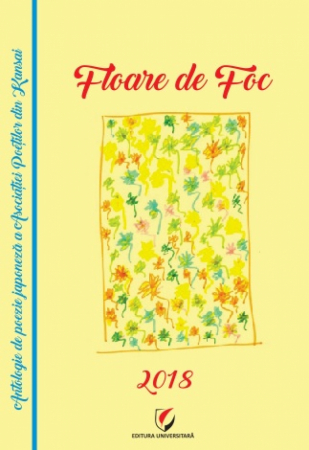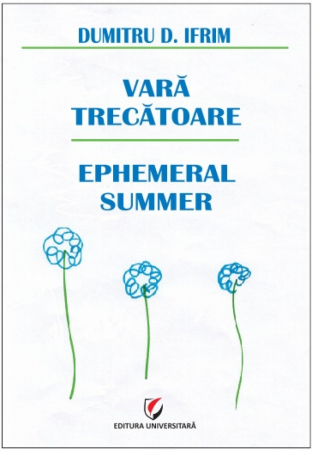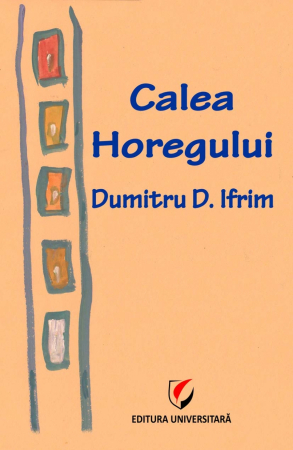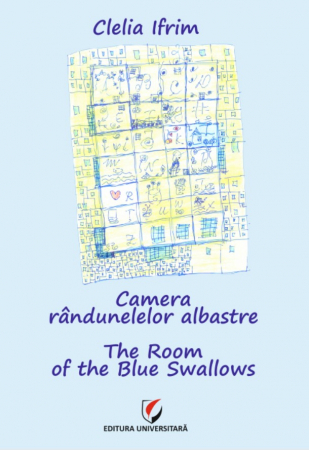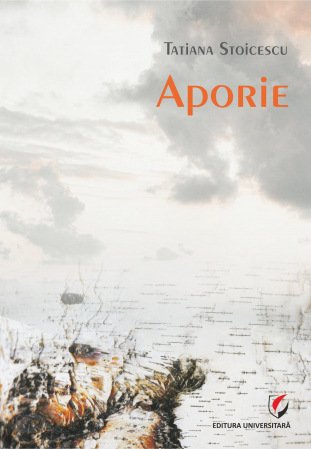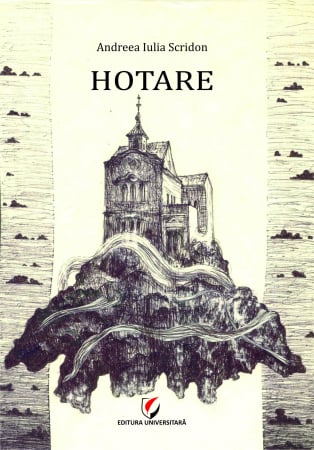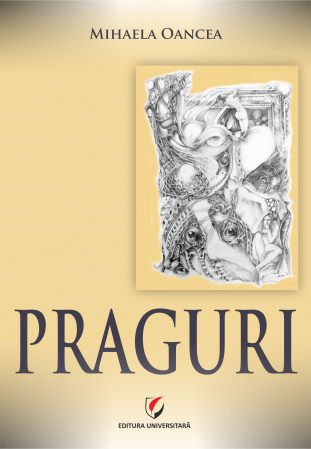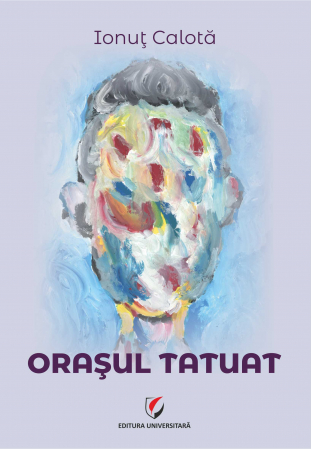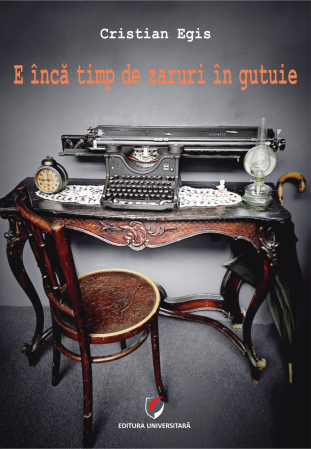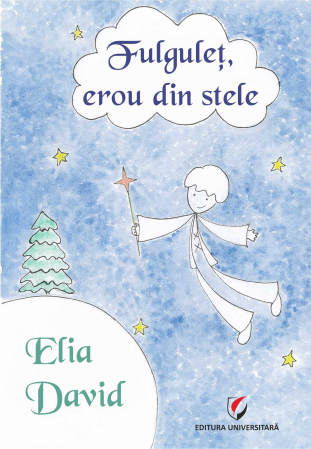Manuscript proposals: [email protected] / 0745 204 115 //// Tracking orders Individuals / Sales: 0745 200 357 / Orders Legal entities: 0721 722 783
ISBN: 978-606-28-1450-2
DOI: 10.5682 / 9786062814502
Publisher year: 2022
Edition: I
Pages: 120
Publisher: Editura Universitară
Author: Clelia Ifrim
Product Code:
9786062814502
Do you need help?
0745 200 357
- Description
- Download (1)
- Authors
- Content
- More details
- Reviews (0)
At the convergence of the East and the West, haiku rises like "a star carrying the whole sky behind it" - states the Japanese poet Yone Noguchi, the father of the sculptor Isamu Noguchi, a disciple of Constantin Brancusi.
It is this finding that reveals, with deep and refined simplicity, but also with a remarkable power of suggestion, the essays of the writer Clelia Ifrim about haiku, from the book "Haijindo - The Way of the Poets".
The work convinces us that the recourse to haiku, a permanence in the history of Japanese culture, spreading more and more in the world, unique and dynamic, maintains in its universe the ineffable connection between man and nature, but also catharsis as a constant dimension. Like symphonic music, haiku has a good reputation for requiring specific training to penetrate its meanings. The writer's essays convince us that this is not the case.
Usually, haiku is not explained, it is lived. And yet, the poet analyzes him with much dedication and talent.
Beyond poetry, haiku, Japanology, this book, or more precisely this "path of poets" is, in the end, a meditation on life, processed by a poetic soul. It is the path of meditation and at the same time the path of one's own understanding of some verses written by others.
The poet calls us to look at haiku like a cherry blossom on the cake of poetry. The author does not say, but only suggests, taking us delicately through the labyrinths of the word, settles comfortably in the Japanese atmosphere, in the landscape with rice paddies and azaleas, with kimonos and wooden dolls and leads us through the charming buildings of haiku, suggesting mysterious shades, but no ambiguities left to the reader. We understand that the art of haiku reading does not begin with deep philosophical thinking but rather with the juxtaposition between the simplicity of the everyday and the subtle imaginative, facilitating access to an original semantic area.
Reading it carefully, I realized that one day we could witness the establishment of a World Haiku Society, which would extract the distillate of poetry into an increasingly interconnected world, in which artificial intelligence instantly translates, leaving it only gives us the pleasure of enjoying a successful haiku, from somewhere far away from the world.
Well documented, with forays into the history of the genre and the rules of composition, even through references to Japanese terms but also to snapshots from the author's life, the work opens a door to the infinite horizon of Japanese-style poetic dreaming.
The generic themes of human life are reflected in the essays collected in the book, after being published in various journals for five years.
Arranged as in a decimal system, the chapters of the paper maintain the balance between nature and soul, from "Shape of Things" to "Haiku of Love," juggling the magic of "Transcendental Numbers," to "Matching Things" in a Japanese Matrix. (mono-aware). The chapters merge together like shells on which half of the poems are written ready to be paired.
Remembering her own burned manuscripts, Clelia reaches the white ashes of the burnt azalea branches, bearing the memory of her previous identity, simplifying the colors to the black and white binomial.
The primordiality of life leaves its mark on titles such as "Love Haiku" or "The Child in Haiku Literature", assimilating the plant life in the chapters "The Other" or "Red and White", in which the invisible interior of the flower leaves its shape to it opens to the world.
We learn that we should not look for the meanings that someone else would have given to the three verses of the haiku, but let ourselves be carried away by the words in the simplicity of our own experience. We understand that haiku does not seek to create confusion through deliberate complications, as is sometimes the case in modern poetry.
It is this finding that reveals, with deep and refined simplicity, but also with a remarkable power of suggestion, the essays of the writer Clelia Ifrim about haiku, from the book "Haijindo - The Way of the Poets".
The work convinces us that the recourse to haiku, a permanence in the history of Japanese culture, spreading more and more in the world, unique and dynamic, maintains in its universe the ineffable connection between man and nature, but also catharsis as a constant dimension. Like symphonic music, haiku has a good reputation for requiring specific training to penetrate its meanings. The writer's essays convince us that this is not the case.
Usually, haiku is not explained, it is lived. And yet, the poet analyzes him with much dedication and talent.
Beyond poetry, haiku, Japanology, this book, or more precisely this "path of poets" is, in the end, a meditation on life, processed by a poetic soul. It is the path of meditation and at the same time the path of one's own understanding of some verses written by others.
The poet calls us to look at haiku like a cherry blossom on the cake of poetry. The author does not say, but only suggests, taking us delicately through the labyrinths of the word, settles comfortably in the Japanese atmosphere, in the landscape with rice paddies and azaleas, with kimonos and wooden dolls and leads us through the charming buildings of haiku, suggesting mysterious shades, but no ambiguities left to the reader. We understand that the art of haiku reading does not begin with deep philosophical thinking but rather with the juxtaposition between the simplicity of the everyday and the subtle imaginative, facilitating access to an original semantic area.
Reading it carefully, I realized that one day we could witness the establishment of a World Haiku Society, which would extract the distillate of poetry into an increasingly interconnected world, in which artificial intelligence instantly translates, leaving it only gives us the pleasure of enjoying a successful haiku, from somewhere far away from the world.
Well documented, with forays into the history of the genre and the rules of composition, even through references to Japanese terms but also to snapshots from the author's life, the work opens a door to the infinite horizon of Japanese-style poetic dreaming.
The generic themes of human life are reflected in the essays collected in the book, after being published in various journals for five years.
Arranged as in a decimal system, the chapters of the paper maintain the balance between nature and soul, from "Shape of Things" to "Haiku of Love," juggling the magic of "Transcendental Numbers," to "Matching Things" in a Japanese Matrix. (mono-aware). The chapters merge together like shells on which half of the poems are written ready to be paired.
Remembering her own burned manuscripts, Clelia reaches the white ashes of the burnt azalea branches, bearing the memory of her previous identity, simplifying the colors to the black and white binomial.
The primordiality of life leaves its mark on titles such as "Love Haiku" or "The Child in Haiku Literature", assimilating the plant life in the chapters "The Other" or "Red and White", in which the invisible interior of the flower leaves its shape to it opens to the world.
We learn that we should not look for the meanings that someone else would have given to the three verses of the haiku, but let ourselves be carried away by the words in the simplicity of our own experience. We understand that haiku does not seek to create confusion through deliberate complications, as is sometimes the case in modern poetry.
-
Haijindo - The Way of the Poets
Download
CLELIA IFRIM was born in Bucharest, where she still lives today. She is a member of the Romanian Writers' Union, the International Writers and Artists Association - IWA - in the USA, the Universal Association of Japanese Poets - JUNPA - in Japan, a lifelong member of the Naji Naaman Culture Foundation in Lebanon.
Title of Nobility, with the rank of Domnita, granted by the "Saint Sava" Foundation.
She has published over thirty books - poetry, theater, short prose, novels, essays on haiku and tanka, translations.
UNITER nomination for the best Romanian song, 1994, for the song "Center of Excellence". Nomination of the Writers' Union for the theater book "Children of the Royal House" 2013. National Prize "Vasile Voiculescu" poetry section, for the book "Closca cu puii de pedra" 2015.
"Mihai Eminescu" medal and diploma awarded by the European Foundation and the "Mihai Eminescu" International Academy for merits in promoting Romanian and international culture.
Itoen New Haiku Grand Prix in English Japan, 1994.
Grand Prix, Matsuo Bashô Festival Japan, 2011.
Best Books for My Loved Japan The Japan Times, 2011.
Three of his books of poetry have been translated into Japanese by Mariko Sumikura and published by JUNPA Books in Japan.
Two of his poems were selected by JAXA - the Japanese Space Agency - and stored on the Kibo space module on the International Space Station.
The most recent editorial, the book of Poems / Gedichte "Lambs of Abel / Abels Lämmer". German translation by Christian W. Schenk.
Title of Nobility, with the rank of Domnita, granted by the "Saint Sava" Foundation.
She has published over thirty books - poetry, theater, short prose, novels, essays on haiku and tanka, translations.
UNITER nomination for the best Romanian song, 1994, for the song "Center of Excellence". Nomination of the Writers' Union for the theater book "Children of the Royal House" 2013. National Prize "Vasile Voiculescu" poetry section, for the book "Closca cu puii de pedra" 2015.
"Mihai Eminescu" medal and diploma awarded by the European Foundation and the "Mihai Eminescu" International Academy for merits in promoting Romanian and international culture.
Itoen New Haiku Grand Prix in English Japan, 1994.
Grand Prix, Matsuo Bashô Festival Japan, 2011.
Best Books for My Loved Japan The Japan Times, 2011.
Three of his books of poetry have been translated into Japanese by Mariko Sumikura and published by JUNPA Books in Japan.
Two of his poems were selected by JAXA - the Japanese Space Agency - and stored on the Kibo space module on the International Space Station.
The most recent editorial, the book of Poems / Gedichte "Lambs of Abel / Abels Lämmer". German translation by Christian W. Schenk.
Foreword. Cherry blossom on the cake of poetry - Radu Serban / 9
The first library in heaven / 15
Kigo - a key word in haiku / 21
The child in haiku literature / 41
Five legends for the color white / 51
The other / 59
Red and white / 65
Transcendental numbers / 73
Matching things / 81
Form of things / 85
White literature / 91
Haiku of love / 97
Messaging / 105
Paper bird / 111
The first library in heaven / 15
Kigo - a key word in haiku / 21
The child in haiku literature / 41
Five legends for the color white / 51
The other / 59
Red and white / 65
Transcendental numbers / 73
Matching things / 81
Form of things / 85
White literature / 91
Haiku of love / 97
Messaging / 105
Paper bird / 111
At the convergence of the East and the West, haiku rises like "a star carrying the whole sky behind it" - states the Japanese poet Yone Noguchi, the father of the sculptor Isamu Noguchi, a disciple of Constantin Brancusi.
It is this finding that reveals, with deep and refined simplicity, but also with a remarkable power of suggestion, the essays of the writer Clelia Ifrim about haiku, from the book "Haijindo - The Way of the Poets".
The work convinces us that the recourse to haiku, a permanence in the history of Japanese culture, spreading more and more in the world, unique and dynamic, maintains in its universe the ineffable connection between man and nature, but also catharsis as a constant dimension. Like symphonic music, haiku has a good reputation for requiring specific training to penetrate its meanings. The writer's essays convince us that this is not the case.
Usually, haiku is not explained, it is lived. And yet, the poet analyzes him with much dedication and talent.
Beyond poetry, haiku, Japanology, this book, or more precisely this "path of poets" is, in the end, a meditation on life, processed by a poetic soul. It is the path of meditation and at the same time the path of one's own understanding of some verses written by others.
The poet calls us to look at haiku like a cherry blossom on the cake of poetry. The author does not say, but only suggests, taking us delicately through the labyrinths of the word, settles comfortably in the Japanese atmosphere, in the landscape with rice paddies and azaleas, with kimonos and wooden dolls and leads us through the charming buildings of haiku, suggesting mysterious shades, but no ambiguities left to the reader. We understand that the art of haiku reading does not begin with deep philosophical thinking but rather with the juxtaposition between the simplicity of the everyday and the subtle imaginative, facilitating access to an original semantic area.
Reading it carefully, I realized that one day we could witness the establishment of a World Haiku Society, which would extract the distillate of poetry into an increasingly interconnected world, in which artificial intelligence instantly translates, leaving it only gives us the pleasure of enjoying a successful haiku, from somewhere far away from the world.
Well documented, with forays into the history of the genre and the rules of composition, even through references to Japanese terms but also to snapshots from the author's life, the work opens a door to the infinite horizon of Japanese-style poetic dreaming.
The generic themes of human life are reflected in the essays collected in the book, after being published in various journals for five years.
Arranged as in a decimal system, the chapters of the paper maintain the balance between nature and soul, from "Shape of Things" to "Haiku of Love," juggling the magic of "Transcendental Numbers," to "Matching Things" in a Japanese Matrix. (mono-aware). The chapters merge together like shells on which half of the poems are written ready to be paired.
Remembering her own burned manuscripts, Clelia reaches the white ashes of the burnt azalea branches, bearing the memory of her previous identity, simplifying the colors to the black and white binomial.
The primordiality of life leaves its mark on titles such as "Love Haiku" or "The Child in Haiku Literature", assimilating the plant life in the chapters "The Other" or "Red and White", in which the invisible interior of the flower leaves its shape to it opens to the world.
We learn that we should not look for the meanings that someone else would have given to the three verses of the haiku, but let ourselves be carried away by the words in the simplicity of our own experience. We understand that haiku does not seek to create confusion through deliberate complications, as is sometimes the case in modern poetry.
From reading the book, I personally come to the conclusion that esotericism has nothing to do with haiku and that the sublime art should not be sought in every verse. The very avoidance of metaphor, as a recommendation in haiku, confirms my idea that the pleasure of reading a haiku consists precisely in the recognition of familiar, everyday language. And yet ..., the simple word, entangled in the machine of a haiku, is haloed with a touch of mystery, suggesting possible answers to philosophical questions: “What remains? Maybe just the murmur of eternally flowing water. " This is the charm of haiku, revealed in "Haijindo - The Way of the Poets".
Radu Serban
November 22, 2021
It is this finding that reveals, with deep and refined simplicity, but also with a remarkable power of suggestion, the essays of the writer Clelia Ifrim about haiku, from the book "Haijindo - The Way of the Poets".
The work convinces us that the recourse to haiku, a permanence in the history of Japanese culture, spreading more and more in the world, unique and dynamic, maintains in its universe the ineffable connection between man and nature, but also catharsis as a constant dimension. Like symphonic music, haiku has a good reputation for requiring specific training to penetrate its meanings. The writer's essays convince us that this is not the case.
Usually, haiku is not explained, it is lived. And yet, the poet analyzes him with much dedication and talent.
Beyond poetry, haiku, Japanology, this book, or more precisely this "path of poets" is, in the end, a meditation on life, processed by a poetic soul. It is the path of meditation and at the same time the path of one's own understanding of some verses written by others.
The poet calls us to look at haiku like a cherry blossom on the cake of poetry. The author does not say, but only suggests, taking us delicately through the labyrinths of the word, settles comfortably in the Japanese atmosphere, in the landscape with rice paddies and azaleas, with kimonos and wooden dolls and leads us through the charming buildings of haiku, suggesting mysterious shades, but no ambiguities left to the reader. We understand that the art of haiku reading does not begin with deep philosophical thinking but rather with the juxtaposition between the simplicity of the everyday and the subtle imaginative, facilitating access to an original semantic area.
Reading it carefully, I realized that one day we could witness the establishment of a World Haiku Society, which would extract the distillate of poetry into an increasingly interconnected world, in which artificial intelligence instantly translates, leaving it only gives us the pleasure of enjoying a successful haiku, from somewhere far away from the world.
Well documented, with forays into the history of the genre and the rules of composition, even through references to Japanese terms but also to snapshots from the author's life, the work opens a door to the infinite horizon of Japanese-style poetic dreaming.
The generic themes of human life are reflected in the essays collected in the book, after being published in various journals for five years.
Arranged as in a decimal system, the chapters of the paper maintain the balance between nature and soul, from "Shape of Things" to "Haiku of Love," juggling the magic of "Transcendental Numbers," to "Matching Things" in a Japanese Matrix. (mono-aware). The chapters merge together like shells on which half of the poems are written ready to be paired.
Remembering her own burned manuscripts, Clelia reaches the white ashes of the burnt azalea branches, bearing the memory of her previous identity, simplifying the colors to the black and white binomial.
The primordiality of life leaves its mark on titles such as "Love Haiku" or "The Child in Haiku Literature", assimilating the plant life in the chapters "The Other" or "Red and White", in which the invisible interior of the flower leaves its shape to it opens to the world.
We learn that we should not look for the meanings that someone else would have given to the three verses of the haiku, but let ourselves be carried away by the words in the simplicity of our own experience. We understand that haiku does not seek to create confusion through deliberate complications, as is sometimes the case in modern poetry.
From reading the book, I personally come to the conclusion that esotericism has nothing to do with haiku and that the sublime art should not be sought in every verse. The very avoidance of metaphor, as a recommendation in haiku, confirms my idea that the pleasure of reading a haiku consists precisely in the recognition of familiar, everyday language. And yet ..., the simple word, entangled in the machine of a haiku, is haloed with a touch of mystery, suggesting possible answers to philosophical questions: “What remains? Maybe just the murmur of eternally flowing water. " This is the charm of haiku, revealed in "Haijindo - The Way of the Poets".
Radu Serban
November 22, 2021
If you want to express your opinion about this product you can add a review.
write a review

6359.png)
![Haijindo - The Way of the Poets - Clelia Ifrim [1] Haijindo - The Way of the Poets - Clelia Ifrim [1]](https://gomagcdn.ro/domains/editurauniversitara.ro/files/product/large/haijindo-calea-poetilor-clelia-ifrim-6888-8186.jpg)

